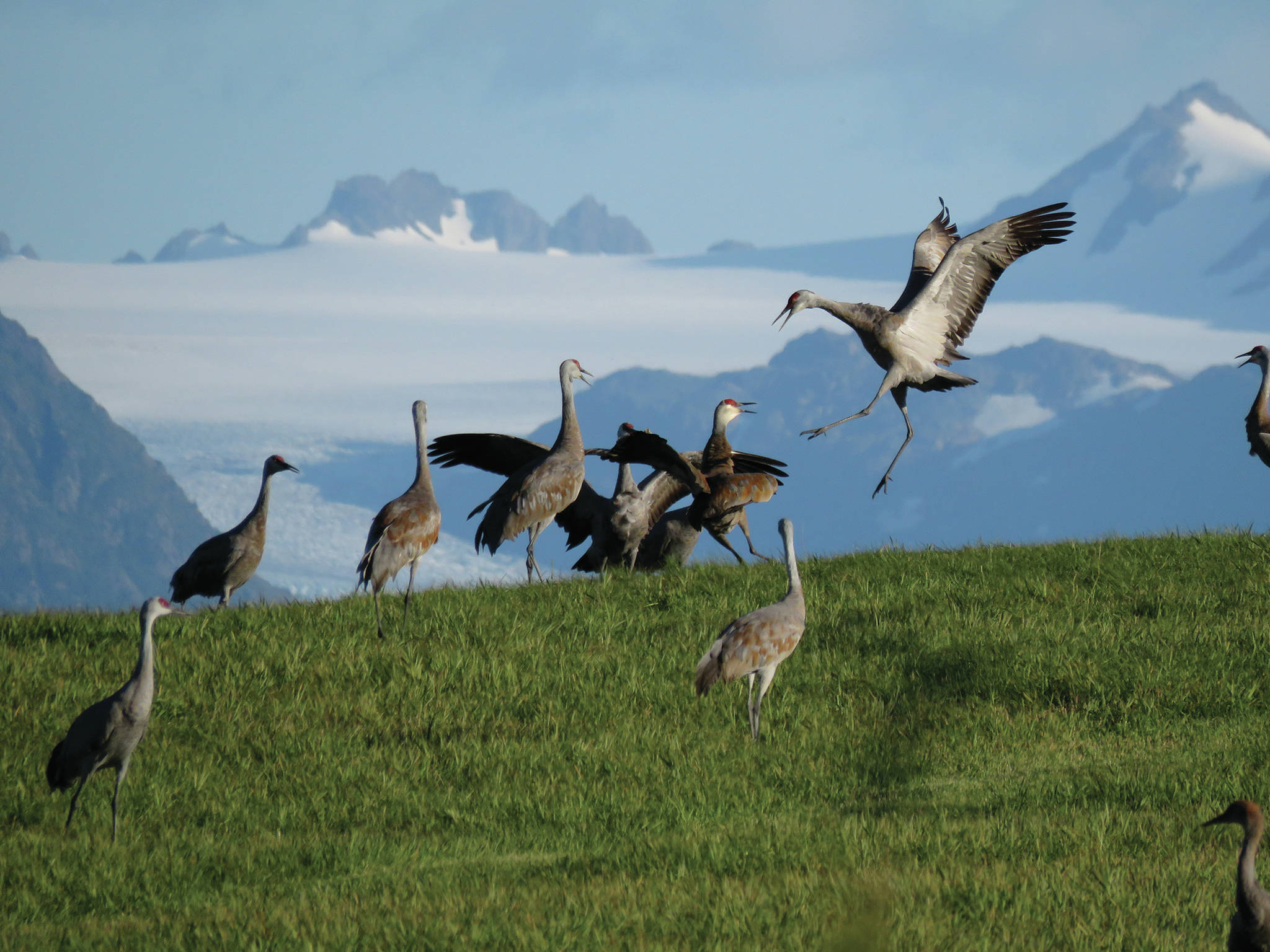A friend told me recently that March is her favorite month. What? Not May when our birds of summer come home to nest? Nor June when we celebrate the solstice, wobbly moose calves and salmon? What about autumn’s beautiful colors and call to harvest? There must be some of you that love winter best with its holidays, alpenglow, and long hours to view the aurora? Nope, she chooses March, when we’re still cloaked in winter but we begin to steal the daylight back. March, when the warmer days and still cold nights conspire to form a layer on top of the snow, opening up the backcountry to crust skiing. The time of year that pregnant moose come down to lower elevations where spring is a little closer. March, when kids get a break from school before the final push to graduation.
This March was different. Spring break is extended until May and everything is canceled. Educators at Kenai and Alaska Maritime National Wildlife Refuges would normally be greeting hundreds of children from the Kenai Peninsula this month, welcoming them to our visitor centers and taking them outside to study science on snowshoes. Instead, we’re figuring out how to meet families through social media and live streaming, and provide lesson plans for parents who are suddenly homeschooling their kids. Kenai Refuge is already posting lessons on its Facebook page and educators from both refuges will be offering virtual visits and tips for experiencing the outdoors in the coming weeks.
In this week’s column I had hoped to highlight the Kachemak Bay Shorebird Festival and begin registration for the roughly 1,000 people that come to Homer to celebrate the birds. The Alaska Maritime National Wildlife Refuge and Friends of Alaska’s National Wildlife Refuges won’t be hosting the 28th annual festival in person, but we are starting to plan for our first ever virtual festival. We’ll share those details in a future column and on the festival website at https://kachemakshorebird.org.
While the shorebird festival and many other events are postponed this year, migration is not. The birds are already on their way, and shorebirds will be putting on a dazzling show over the mudflats around Kachemak Bay and Cook Inlet very soon. While I’ve enjoyed the quiet of my winter wanderings, I’m looking forward to the spring symphony of songbirds. I’ve already heard my first varied thrush singing from the top of a spruce tree. Share your bird sightings and find out what others are seeing on the Kachemak Bay Birders website http://kachemakbaybirders.org.
One of the earliest bird arrivals will be sandhill cranes. “Our” cranes began their long journey from California at the beginning of March and we expect to see them by April 15. Once they hit the Kenai Peninsula they’ll be busy preparing for nesting season. Along the Beluga Slough Trail at the Alaska Maritime National Wildlife Refuge Visitor Center, several crane pairs have set up housekeeping during the last few years. From the trail you can see the cranes performing a variety of interesting behaviors like painting, foraging, breeding and dancing. Yes, painting. As it turns out, humans aren’t the only daubers on the peninsula. Cranes stain their bright grey plumage with soil, which helps them to blend in with their surroundings. The camouflage provides crane families extra protection from predators like eagles or coyotes.
These well-rounded artists also dance. The crane version of the flamenco dance includes lofty leaps (up to 20 feet high), bottom-most bows, as well as kicks, calls and lots of feather ruffling. A male striking a pose on the dance floor is meant to attract the attention of a female to pirouette with him. If all goes well, the pair will begin nesting in early May.
Of course, after that long journey they also need to refuel. Cranes are not picky eaters. Wielding a long sharp bill and an intense gaze, they wade through the slough eating plants, tubers, insects and other invertebrates, and probably a few mice or voles. Once the snow is melted, our local natural areas have fully stocked pantries for these omnivores.
This is a stressful time for many of us, but I hope that you can take time to savor the transition from March to April and the first hints of springtime. We’ll miss all of the events that are being postponed or canceled, but we can find comfort in nature’s familiar patterns of seasonal transition and the miracle of migration.
Spring housekeeping for living with wildlife on the Peninsula: Cranes have plenty to eat in the peninsula’s natural areas. They are safer finding their own food than congregating around feeding stations in neighborhoods where they are more vulnerable to dogs, cars and overhead wires.
Don’t forget that the longer days might be waking up bears, too. Take the normal precautions that you would in bear country. Keep your dog on a leash and bear deterrent handy. At home, clean up anything that would attract bears. It’s time to put away the bird feeders and give them a good washing and sanitizing before you store them until the winter. Check the security of compost piles and chicken coops. Are your poultry protected by electrical fencing and also covered to avoid hungry avian predators?
Marianne Aplin is the Visitor Services Manager at Alaska Maritime National Wildlife Refuge. Find more Refuge Notebook articles (1999–present) at https://www.fws.gov/refuge/Kenai/community/refuge_notebook.html.


